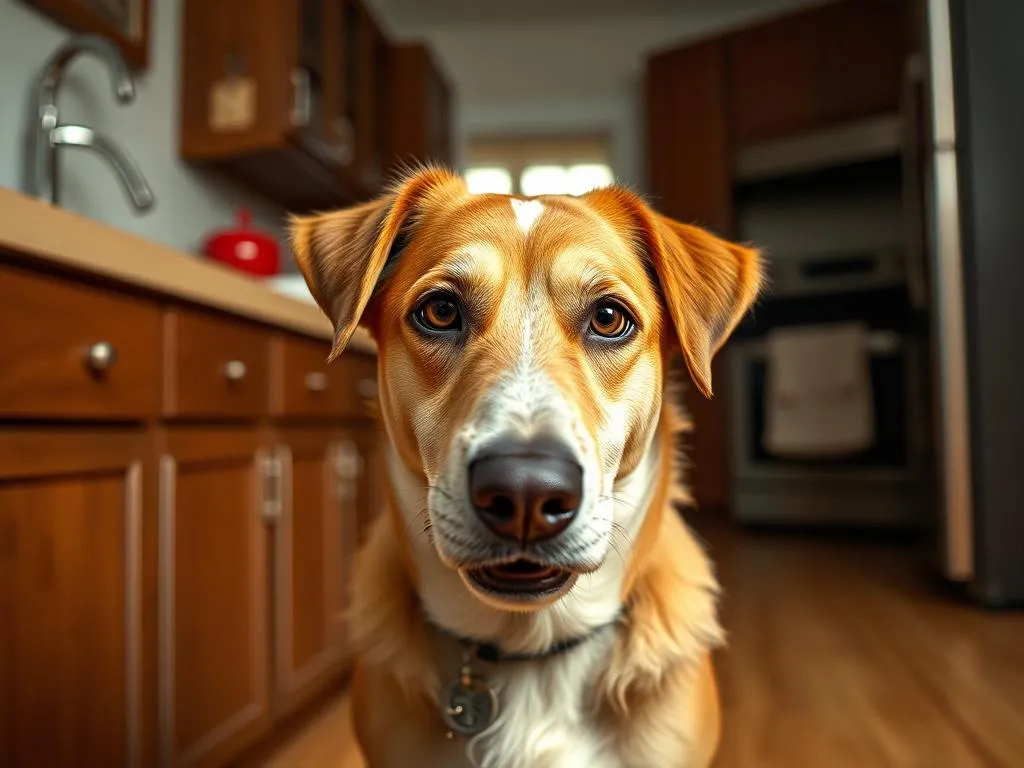
Introduction
Training your dog to stay out of the kitchen is essential for creating a safe and harmonious home environment. A dog’s natural instincts often lead them to explore the kitchen, driven by their curiosity and keen sense of smell. However, this behavior can lead to safety hazards, food theft, and even health risks if they consume something harmful. A well-trained dog not only enhances your living space but also fosters a sense of security for both the pet and the family. In this article, we will explore effective strategies on how to train your dog to stay out of the kitchen while ensuring a positive and fulfilling experience for both you and your furry friend.
Understanding the Dog’s Behavior
The Canine Instincts
Dogs are natural scavengers, and their instincts encourage them to explore areas where food is present. The kitchen, filled with enticing scents and delicious morsels, can be irresistible to a curious dog. Understanding these instincts is the first step in addressing kitchen intrusion. By recognizing that your dog is not misbehaving but rather following its natural instincts, you can approach training with empathy.
Reasons for Kitchen Intrusion
Food motivation is a powerful driving force for dogs. Their sense of smell is significantly stronger than that of humans, making the kitchen an exciting place full of potential treats. Additionally, behavioral factors such as boredom or anxiety can exacerbate kitchen exploration. Dogs may venture into the kitchen seeking attention or as a response to stressful situations. Understanding these underlying reasons will help you tailor your training approach effectively.
Setting the Stage for Training
Creating a Safe Training Environment
Before embarking on training, it’s crucial to create an environment conducive to learning. Minimize distractions by choosing a quiet area away from the hustle and bustle of daily life. Ensure that your dog is calm and focused. A peaceful atmosphere enhances the effectiveness of your training sessions, allowing your dog to absorb commands and understand boundaries.
Essential Tools for Training
Gathering the right tools will set you up for success. Essential items include:
- Leash: Provides control and guidance during training.
- Treats: Use high-value treats your dog loves to encourage good behavior.
- Clicker: Optional, but effective for marking desired actions.
Additionally, consider using gates or barriers to physically block kitchen access during training. These tools will help reinforce the concept of boundaries while you work with your dog.
Training Techniques
Basic Commands that Support Kitchen Boundaries
Teaching basic commands like “Leave it” and “Stay” is foundational in training your dog to respect kitchen boundaries. Start by practicing these commands in a distraction-free environment. Consistency is key—use the same verbal cues and hand signals every time. For instance, when you say “Leave it,” ensure you follow through until your dog understands that entering the kitchen is not acceptable.
Positive Reinforcement Strategies
Positive reinforcement is a powerful training tool. Whenever your dog successfully stays out of the kitchen or follows your commands, reward them immediately with treats and praise. Timing is crucial—reinforce good behavior right away to help your dog associate the command with the reward. This approach not only encourages compliance but also strengthens the bond between you and your dog.
Gradual Desensitization
Gradual desensitization can help your dog become accustomed to kitchen boundaries over time. Start by allowing your dog to observe you in the kitchen while keeping them on a leash. As they become more comfortable, gradually increase the distance between the dog and the kitchen. If your dog approaches the kitchen, calmly redirect them with a command like “Back” or “Leave it.” This process helps your dog learn to respect kitchen boundaries without feeling overwhelmed.
Redirecting Attention
Keeping your dog occupied with alternative activities is essential in training. Provide engaging toys, puzzles, or interactive games that can divert their attention away from the kitchen. Consider using treat-dispensing toys to keep your dog mentally stimulated. This redirection not only keeps them busy but also reduces the likelihood of kitchen exploration.
Addressing Common Challenges
Dealing with Persistent Dogs
Some dogs may be more stubborn or persistent in their kitchen exploration. Patience and consistency are vital when training these dogs. If your dog continues to ignore training cues, revisit the basics and practice commands in shorter, more focused sessions. Gradually increase the difficulty by introducing distractions as they improve.
Managing Situations with Multiple Family Members
Training can be challenging when multiple family members are involved. To ensure everyone is on the same page, hold a family meeting to discuss training techniques and establish a consistent approach. Create a shared understanding of commands and expectations to avoid confusion for your dog. Consistency among family members reinforces boundaries and helps your dog learn more effectively.
Handling Setbacks
Setbacks are a normal part of the training process. If your dog slips up and enters the kitchen despite training efforts, remain calm and patient. Assess the situation to understand what triggered the behavior and make adjustments if necessary. Staying motivated and flexible in your training approach will ultimately lead to success.
Long-Term Maintenance of Training
Reinforcing Training Over Time
Maintaining training is as important as the initial instruction. Regular practice sessions help reinforce boundaries and keep your dog attentive to commands. Incorporate training into your daily routines, such as asking your dog to “Stay” while you prepare meals. This not only helps reinforce their training but also strengthens your bond through shared activities.
Monitoring Kitchen Behavior
Continually monitoring your dog’s behavior in the kitchen is crucial. Keep an eye on their reactions and reinforce positive behavior consistently. Visual reminders, such as mats or signs, can serve as cues for your dog to remember kitchen boundaries. These reminders help reinforce learning and keep both you and your dog focused on maintaining those boundaries.
Conclusion
Training your dog to stay out of the kitchen requires understanding, patience, and consistency. By recognizing their instincts and employing effective training techniques, you can create a safe environment that benefits both your dog and your household. Remember to use positive reinforcement, maintain regular practice, and adapt your methods as needed. With dedication and effort, you’ll successfully teach your dog to respect kitchen boundaries, allowing for a harmonious living space.
Encouragement and support are vital as you embark on this training journey. Share your experiences and tips, and remember to celebrate the small victories along the way. Consistent training will lead to a well-behaved dog and a safer, happier home.









